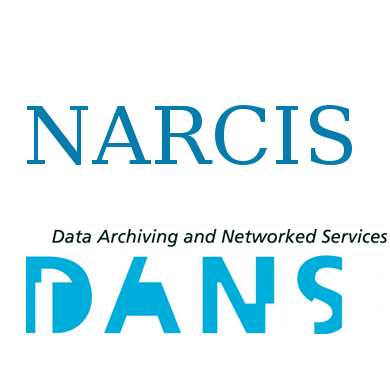Focal point
Location
National Academic Research and Collaborations Information System (NARCIS) is the main Dutch national portal for those looking for information about researchers and their work. NARCIS aggregates data from around 30 institutional repositories. Besides researchers, NARCIS is also used by students, journalists and people working in educational and government institutions as well as the business sector.
NARCIS provides access to scientific information, including (open access) publications from the repositories of all the Dutch universities, KNAW, NWO and a number of research institutes, datasets from some data archives as well as descriptions of research projects, researchers and research institutes.
This means that NARCIS cannot be used as an entry point to access complete overviews of publications of researchers (yet). However, there are more institutions that make all their scientific publications accessible via NARCIS. By doing so, it will become possible to create much more complete publication lists of researchers.
In 2004, the development of NARCIS started as a cooperation project of KNAW Research Information, NWO, VSNU and METIS, as part of the development of services within the DARE programme of SURFfoundation. This project resulted in the NARCIS portal, in which the DAREnet service was incorporated in January 2007. NARCIS has been part of DANS since 2011.
DANS - Data Archiving and Networked Services - is the Netherlands Institute for permanent access to digital research resources. DANS encourages researchers to make their digital research data and related outputs Findable, Accessible, Interoperable and Reusable.
Members:
Resources
Displaying 471 - 475 of 1863Species in a dynamic world: Consequences of habitat network dynamics on conservation planning
Habitat dynamics (habitat turnover due to natural perturbations or human activity) are commonplace, particularly in intensively used landscapes. Conservation planning requires an understanding of how spatio-temporal habitat dynamics and species characteristics interact with and relate to species persistence. We conducted a systematic literature review to determine how spatial and temporal properties of habitat networks can be changed to improve species viability in dynamic landscapes.
Sampling efficiency of national, EU and global stratifications : exploring by using CL2000
Stratification, dividing the statistical population into less heterogeneous subgroups before sampling, can help improve sampling efficiency by improving representativeness and reducing sampling error. This report explores the added sampling efficiency that is achieved by using the European Environmental stratification for estimating the area covered by the 25 Corine Land Cover (CLC) categories occurring in the semi-natural and managed terrestrial habitats of the wider-countryside.
Betrokkenheid van Nederlandse bedrijven bij transnationale grondverwerving en pacht : een eerste verkenning
Vooral sinds de scherpe stijging van de voedselprijzen in 2007/2008 is er een sterk toegenomen belangstelling van landen en bedrijven om grond in andere landen in gebruik te nemen voor de productie van landbouwgewassen, zowel voor voedselgewassen als voor biobrandstoffen. Het gaat om zeer grote oppervlaktes cultuurgrond, met soms vergaande consequenties voor de plaatselijke bevolking. Naast China en de olierijke maar ‘voedselarme’ landen in het Midden Oosten zijn ook Europese bedrijven actief op dat terrein.
Scaling human-induced pressures to population level impacts in the marine environment : implementation of the prototype CUMULEO-RAM model
For centuries the Dutch coastal waters and the North Sea were primarily used for fisheries and shipping, but during the last 20 years the number of uses has increased rapidly. These human uses (such as wind farms, mineral extraction, coastal defences and fisheries) will lead to a decrease in biodiversity and a reduction in ecosystem and mineral resources. Under several European policies and conventions, the EU North Sea member states must establish a sustainable management regime for the marine environment.
Malaysian water sector reform : policy and performance
One of the measures that can help developing countries in meeting Target 10 of the Millennium Development Goals – halving the number of people without access to water and adequate sanitation by 2015 – is through a water sector reform. In this research the Malaysian water sector reform is assessed by answering the following questions: • How can we understand and explain the policy process of the reform? • To what extent have the outputs of the reform contributed to the realization of the reform’s objectives?


